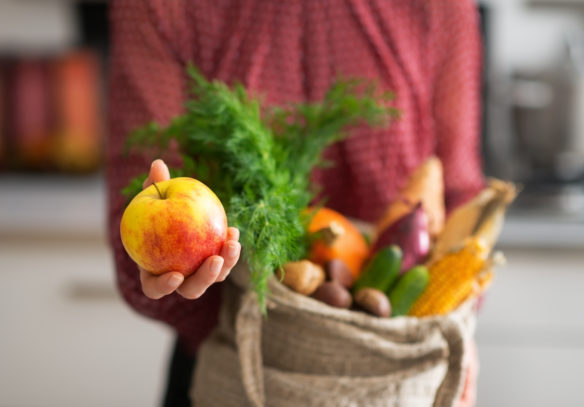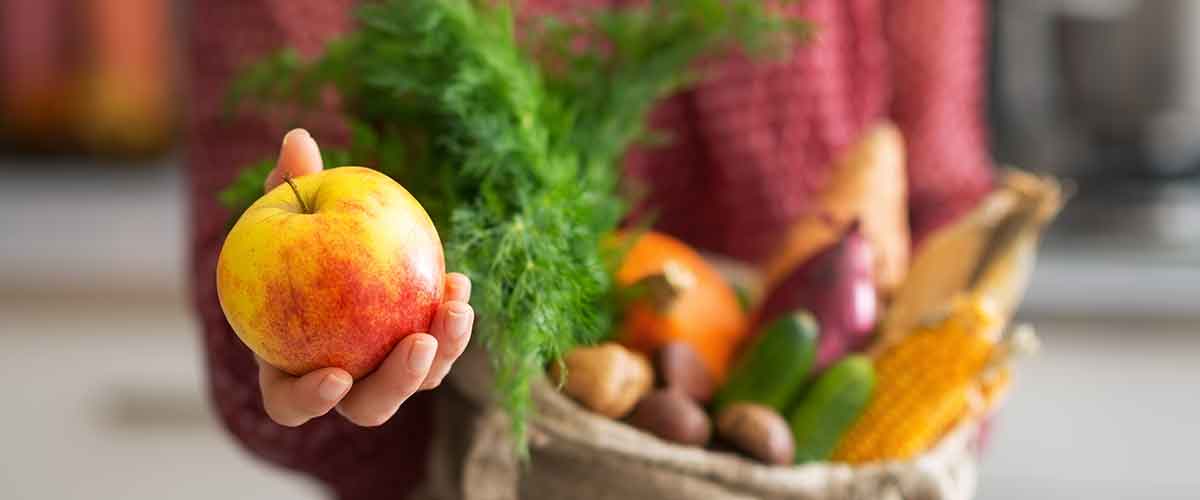Ever heard of “eating the rainbow” or “adding more color” to your diet? The idea behind it isn’t just eating food that looks good on a plate—there are actual health benefits to eating this way. We asked Rachel Johnson, a professor of nutrition at the University of Vermont, registered dietitian, and spokesperson for the American Heart Association to help us understand why colorful fruits and vegetables are so healthy. Here’s what she had to say about adding color to your plate:
What’s the one thing everyone should know about ‘color’ in your diet?
Everyone should know that one of the best ways to get plenty of vitamins, minerals and other nutrients you need is to eat a variety of colorful fruits and vegetables. We recommend that everyone add a variety of color to their plate every day, by choosing from the full spectrum of colorful fruits and vegetables.
What does color have to do with nutrients?
The color in fruits and vegetables comes from hundreds if not thousands of ‘phytochemicals’. Don’t let the name put you off—phytochemicals are actually super-healthy substances that occur naturally in plants. They’re what makes a blueberry blue, a cucumber green and a sweet potato orange.
The colorful phytochemicals work with other nutrients in the fruits and vegetables (and other foods you eat) to deliver all sorts of health benefits, some known and some are still being researched and discovered.

Do different colored fruits and vegetables contain different nutrients?
Fruits and vegetables of all colors contain a wide variety of vitamins and minerals, but specific nutrients are usually associated with color.
- Orange fruits and vegetables contain beta-carotene which is needed for healthy eyes and skin. Also, vitamin C is found in some orange foods like mangoes, oranges, and cantaloupes.
- Red and pink fruits and vegetables are loaded with flavonoids which act as antioxidants in the body. Lycopene, which is in the same family as beta-carotene, gives tomatoes, watermelon, and grapefruit their red hue.
- Yellow usually means the fruit or vegetable is a good source of potassium which helps regulate blood pressure. Some yellow foods—like lemons and bell peppers— are also good sources of vitamin C.
- Green foods like spinach and kale are good sources of lutein and folate.
- Blue and purple foods like blueberries and plums get their color primarily from anthocyanin – an antioxidant.
- White foods aren’t void of nutrients. Mushrooms, garlic, bananas and onions all have their own unique positive nutritional qualities too.
Is there any one color of fruit or vegetable that’s best?
There is no one fruit or vegetable that is the best. It is important to eat a variety of fruits and vegetables, because the different nutrients in them work together to keep you healthy. An easy way to make sure you are getting a variety each day is to eat as many different colors of fruits and vegetables as you can. For example, have strawberries, blueberries, and a banana for your fruit servings. For your vegetables choose broccoli, carrots, cauliflower, and eggplant. Eating a rainbow of colors each day will help you get the variety and nutrition that you need.
Do you have a list of fruits and vegetables grouped by color?
Yes, below is an abbreviated list to get you started, but please check out our site for a more comprehensive overview.
Red & Pink
beets
cherries
cranberries
red apples
red grapes
watermelon
Blue & Purple
blackberries
blueberries
eggplant
grapes
plums
Yellow & Orange
carrots
corn
lemons
mangoes
oranges
orange peppers
White
bananas
garlic
mushrooms
onions
Green
avocado
broccoli
celery
cucumbers
green grapes
kale
Since everyone’s health history and nutritional needs are so different, please make sure that you talk with your doctor and a registered dietitian to get advice about the diet and exercise plan that‘s right for you.
Note: Since everyone’s health history and nutritional needs are so different, please make sure that you talk with your doctor and a registered dietitian to get advice about the diet and exercise plan that‘s right for you.

